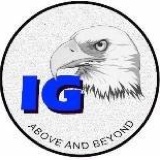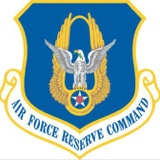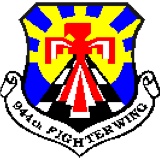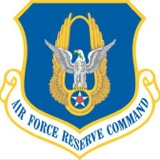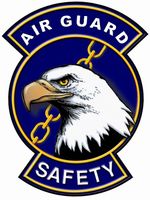Information
-
Document No.
-
Audit Title
-
Client / Site
-
Conducted on
-
Prepared by
-
Location
-
Personnel
1. LETTER OF APPOINTMENT- AFI 91-202
-
1.1. Is the Primary USR appointed in writing by the Unit Commander? (SEG 54 #3) 1.5.20.1
-
1.2. Is the Alternate(s) USR appointed in writing by the Unit Commander? AFI 91-202 para 1.5.20.1, 2.2.3
2. TRAINING- 91-202
-
2.1. Was the Primary USR trained within 2 UTA’s of appointment? 2.2
-
2.2. Was the Alternate(s) USR trained within 2 UTA’s of appointment? 2.2
-
2.3. Have all appointed personnel completed an Air Force Level ORM Training Course? 2.2.1
3. TRAINING LETTERS / CERTIFICATES
-
3.2. Does the USR Maintain proof of ORM training? 2.2.1
-
3.1. Does the USR maintain proof of USR training? 2.2
4. UNIT MISHAP REPORTING PROCEDURES- 91-202
-
4.1. Has the USR ensured unit personnel are aware of mishap reporting procedures? 2.2.4.3
-
4.2. Does the USR assist with mishap investigation? 8.5.3
5. PURCHASE REQUEST 91-202
-
5.1. Has the commander ensured requests for equipment, products, and services using purchase orders and/or GPC are reviewed for potential safety and health impact? (SEG 54 #6) 1.5.20.6
6. UNIT SPOT INSPECTION RECORDS- AFI 91-202
-
6.1. Has USR conducted at least one spot inspection a month? 3.5.2
7. DOCUMENTATION 91-202
-
7.1. Has the USR properly documented monthly spot inspections? 3.5.3
8. ANNUAL ASSESSMENT/INSPECTION REPORTS
-
8.1. Does the USR have the last annual inspection report?
-
8.2 Has the commander ensured all personnel are brief on BE industrial hygiene surveys and reports? Posted for 10 days? Maintained on file for 2 years? 1.5.20.10
9. UNIT MISHAP REPORTS
-
9.1. Consult local procedures from GSM
-
9.2. Are the current Unit Mishap Reporting Procedures available? 1.5.14.9, 8.5.3
10. HAZARD REPORTS
-
10.1. Is the AF Form 457, USAF Hazard Report available to the unit? 4.3
11. HAZARD ABATEMENT
-
11.1. Does the USR assist with the hazard abatement process? 2.2.4.6
-
11.2. Does the Commander/USR report the status of all open RACs to the Wing Safety office monthly? 1.5.20.5, 3.4.2.3
12. UNIT ROSTER
-
12.1. Does the MSR have a current MUSTT Account?
-
12.2. Has the MSR uploaded all riders into MUSTT?
13. USR ANNUAL PROGRAM MANAGEMENT ASSESSMENT
-
13.1. Did the USR facilitate their Annual Program Management Assessment? 2.2.4.7
-
13.2. Does the USR maintain a copy of the current Annual Assessment Report? INFORMATIONAL QUESTION ONLY
14. UNIT SAFETY INFORMATION
-
14.1. Is the Installation CC Safety Perspective Letter available? 1.5.14.13
-
14.2. Is the current Unit Commander’s Safety Perspective Letter available? (SEG 54 #8) 91-202 para 1.5.20.12
-
14.3. INTENTIONALLY LEFT BLANK <br>
-
14.4. Is AFVA 91-307 posted? 8.5.9
-
14.5. Are blank copies of AF Form 457, USAF Hazard Report and readily available? 4.3
-
14.6. Purpose for completing an AF Form 457, USAF Hazard Report? A5.1.10
-
14.7. Are CA-10s posted?
15. UNIT CC SAFETY REVIEW- AFI 91-202
-
15.1. Has the USR conduct a quarterly safety review? 8.5.1
-
15.2. Did the USR document the completion of the quarterly safety review? 8.5.1
16. SUPERVISOR SAFETY TRAINING AFI 91-202
-
16.1. Have (as required) supervisors attended Supervisor Safety Training? (SEG 55 #10) 1.5.21.14, 2.3.2.1
17. JST DEVELOPMENT AFI 91-202
-
17.1. Has the work center supervisor developed a Job Safety Training Outline that is work center/ environment specific? (SEG 55 #4) 1.5.21.4
-
17.2. Does the JST cover the 16 mandatory items listed in AFI 91-202, Attachment 5?
-
17.3. Does the JST cover Job Specific Training Items as listed in AFI 91-202, Attachment 5 as required for the work center?
-
17.4. Does the supervisor update the JST immediately when there is a change in equipment, processes or safety, fire and health requirements? 1.5.21.3, 1.5.21.5
18. JST UTILIZATION
-
18.1. Does the supervisor utilize the JST when training new personnel to the work center, prior to the start of work for the new personnel? 2.3.3.1
-
18.2. Does the supervisor utilize the JST for training personnel in the work center when work conditions or tasks change, prior to the start of new operations? 2.3.3.1<br>
19. JST REVIEW
-
19.1. Does the Supervisor review and update the JST guide annually? 2.3.3.2
-
19.2. Does the Supervisor review and update the JST guide when there is a change in equipment, processes or safety, fire and health requirements? 2.3.3.2
-
19.3. Has the JST Guide been reviewed by safety inspectors during the annual safety inspection? 2.3.3.2
20. JST DOCUMENTATION
-
20.1. Does the Supervisor document initial and refresher training and maintain it in the work center? 2.3.3.3
-
20.2. Does the Supervisor complete and document the Annual review of the JSTO with the date of review and the person conducting review? 2.3.3.2
21. WORK CENTER SPOT INSPECTION RECORDS
-
21.1 Has Supervisor conducted at least one spot inspection a month? 1.5.21.15 & 3.5
-
21.2 Has the Supervisor conducted at least one spot inspection of each identified work center annually? 3.5.2
22. SPOT INSPECTION DOCUMENTATION
-
22.1 Has the Supervisor documented spot inspections? (SEG 55 #11) 1.5.21.15
-
22.2 Does the spot inspection include required items? 3.5.3
23. FALL PROTECTION
-
23.1 Where, active or passive means of fall protection are not feasible and adequate lead time is available or for repetitive operations, is a JSA conducted and documented IAW AFI 91-202? AFI 91-203, Para 13.3.1.3.1 & 24.16.4
-
23.2 For local procedural controls, driven by conditions unique to a local facility or equipment design, or local operational requirements, has a JSA been developed and documented IAW AFI 91-202 approved by the maintenance group commander and coordinated with the organizational and appropriate Ground Safety office before the procedural controls are used? AFI 91-203, Para 24.16.5.2.3
-
23.3 Does each fall protection plan include a rescue plan which includes the availability of rescue personnel, ladders or other rescue equipment shall be determined prior to using a fall arrest system? AFI 91-203, Para 13.7, 13.4.6.1.9 & 24.16.5.2.1<br> <br> <br>
-
23.4 Is the JSA, developed specifically for the worksite, kept up to date and maintained at the work center for the work site, i.e. Maintenance Supervisor or Superintendent, Flight Chief, Supervisor office, TODO offices, etc.? AFI 91-203, Para 13.3.1.3.1<br> <br>
-
23.5 Does the JSA include specific items? AFI 91-203, Para 13.3.1.3.1. - 13.3.1.3.1.4
-
23.6 Is a supervisor designated in writing, responsible for procurement of fall protection/fall arrest systems required by the organization or shop? AFI 91-203, Para 13.5
-
23.7 Does supervisor ensure each worker; qualified person and competent person using a fall protection/fall arrest system are trained and evaluated on proper use, application and inspection of fall protection and arrest systems? AFI 91-203, Para 13.5
-
23.8 Does training include: 1. methods of use, 2. application, 3. inspection and storage, as well as any manufacturer‘s recommendations, 4. application limits, 5. proper anchoring and tie-off techniques, 6. estimation of free fall, 7. deceleration and total fall distance to prevent striking a lower level, 8. applicable fall protection, fall prevention, rescue and evacuation plans. AFI 91-203, Para 13.6
-
23.9 Do anchorages for lifelines and lanyards support at least a 5000 pound load for each person connected to the anchorage and is only one PFAS connected to an anchorage point unless specifically certified for more? AFI 91-203, Para 13.4.6.7
-
23.10 Do supervisors maintain manufacturer‘s instructions and performance testing information for PFASs used by their workers? AFI 91-203, Para 13.4.6.10.4 & 13.4.6.11.1
-
23.11 PFAS equipment shall have the manufacturer‘s name, identification code and date of manufacture stamped on the equipment or permanently attached tag and shall be marked to indicate compliance with ANSI Z359.1. AFI 91-203, Para 13.4.6.2
-
23.12 Is a user inspection made by the person handling or using this equipment each time it is used? TO 00-25-245, Para 2.4.2
-
23.13 Is a periodic inspection conducted by personnel qualified in the use of this equipment, usually 7 or 9 level, and ensure all PFAS components receive a thorough inspection at least quarterly and the inspection is documented and maintained for at least one year? TO 00-25-245, Para 2.4.3 & 91-203, Para 13.4.6.10.3<br> <br>
-
23.14 Are periodic inspections due dates affixed crossways on free ends of belts, harnesses, straps, etc., using black or white stencil ink, dates recorded in chronological order? (Example: "INSP due JAN 2007. Each subsequent inspection due date will appear below preceding date.) TO 00-25-245, Para 2.7
24. CHEMICAL USE AFI 90-821 para 2.7.5.-2.7.5.4.
-
24.1 What processes/chemicals present hazards in this work area?
-
24.2 What is the type of hazard(s) that exists with the processes/chemicals present?
-
24.3 Does the employee know how to interpret hazard symbols/ wording on hazard labels?
-
24.4 Does the employee know what precautions are required when working with hazardous chemicals?
25. ACCESSING/UTILIZING MSDS’ AFI 90-821
-
25.1 Does the employee know where the MSDS’ are located for the chemicals used in the work? 2.5.3.2<br>center?
-
25.2 Can the employee gain access to MSDS’? 2.5.1, 2.5.3.1, 2.5.3.4
-
25.3 Can the employee demonstrate how to find knowledge on an MSDS? 2.7.2.1.5
26. HAZCOM DOCUMENTATION AFI 90-821 para 2.7.4.
-
26.1 Does the Supervisor document initial worker HAZCOM Training? 91-203 A5.4
-
26.2 Does the Supervisor document supplemental worker HAZCOM? 91-203 A5.4
-
26.3<br>Does the Supervisor document external HAZCOM Training provided by contractors, as applicable? 91-203 A5.4<br> <br> <br> <br>
27. PERSONAL PROTECTIVE EQUIPMENT AFI 91-203
-
27.1 Has the supervisor conducted and documented a hazard assessment to identify hazards and PPE required for a particular task? 14.3.1, 14.3.2
-
27.2 Do supervisors ensure that PPE is provided, used, and maintained in a sanitary serviceable condition? 14.3.2
-
27.3 Is protective footwear provided and worn when there is a reasonable possibility of sustaining foot injuries? 14.4.10
28. HOUSEKEEPING 91-203
-
28.1 Are areas where personnel walk and work free of potential tripping and slipping hazards such as tools, electrical cords, air lines and packaging materials? 5.1
-
28.2 Is good housekeeping maintained in all areas, shops, yards, buildings and mobile equipment facilities/areas? 5.9
29. ELECTRICAL SAFETY 91-203
-
29.1 Are electrical receptacles and cover plates free of cracks that expose the interior of the receptacle and securely mounted? 8.2
-
29.2 Are cords that show signs of fraying, cracking, wearing or damage removed from service? 8.4.1.2
30. MOTORCYCLE SAFETY
-
30.1 Is the Motorcycle Safety Representative appointed in writing? AFI 91-207, para 1.3.3.14
-
30.2 Is the Motorcycle Safety Representative trained? AFI 91-207, para 1.3.5.7
-
30.3 Are Installation/Base/Wing Commanders ensuring Motorcycle Safety Foundation (MSF) training or other DoD recognized training made available to DoD personnel who operate a motorcycle? AFI 91-207, para 1.3.3.7
-
30.4 Have Unit Commanders taken proactive measures in promoting motorcycle safety?<br>(These actions include, but are not limited to face-to-face time with riders promoting positive riding attitudes/behaviors, and encouraging Ride Your Bike to Work Days, mentor rides, maintenance/safety workshops, sport bike classes, and similar activities, etc.)
-
30.5 Are Commanders ensuring military riders are informed of motorcycle mentorship club benefits and their opportunity to join?<br>AFI 91-207, para 3.4.3.1
-
30.6 Are Unit Commanders and Supervisors allowing personnel who operate a motorcycle on a roadway, and operators of government owned motorcycles to attend and complete an approved motorcycle rider education course?<br>AFI 91-207, para 4.5.1<br> <br>
-
Add signature
SIGNATURE BLOCK
-
Add signature
-
Add signature
